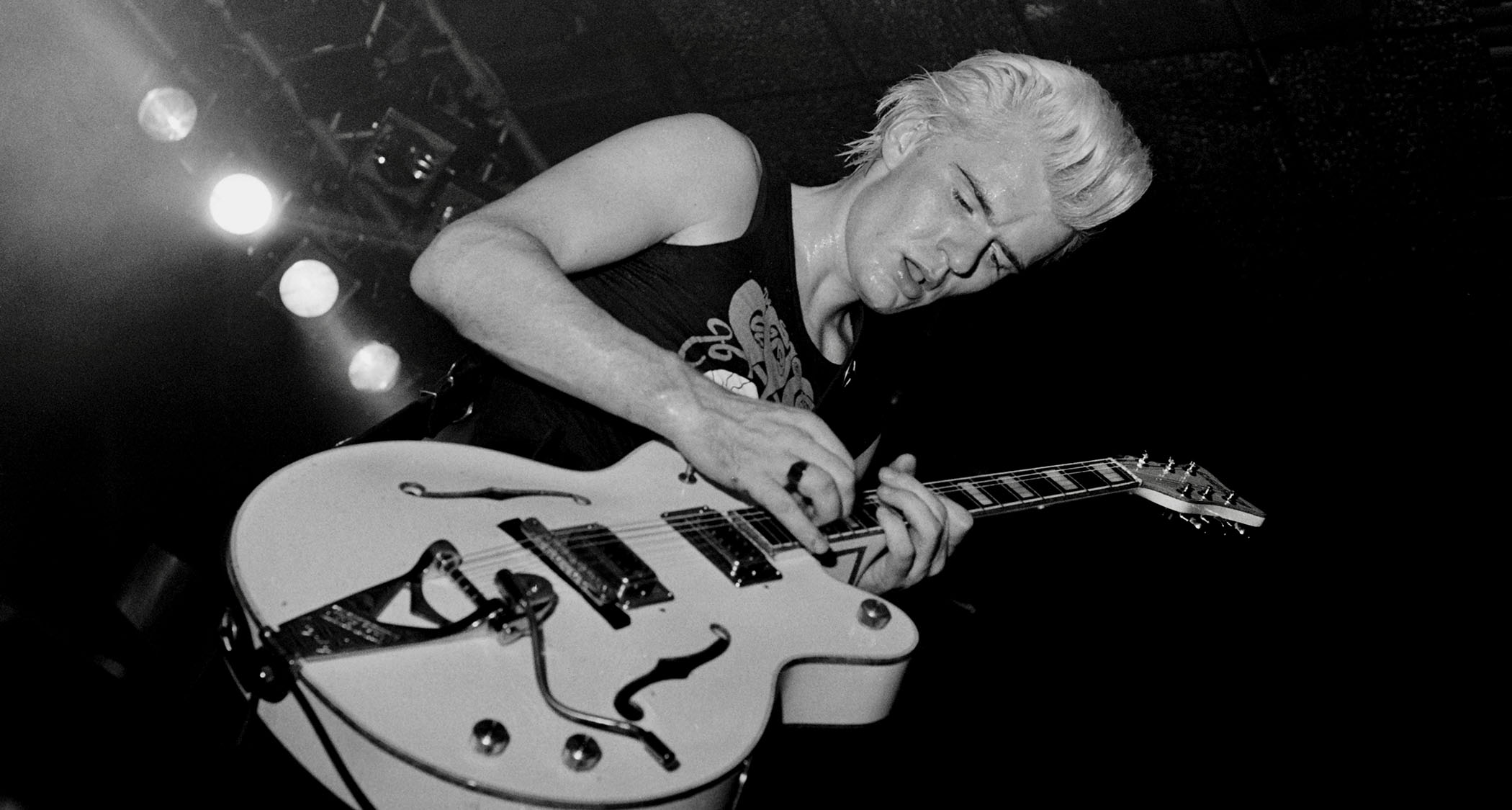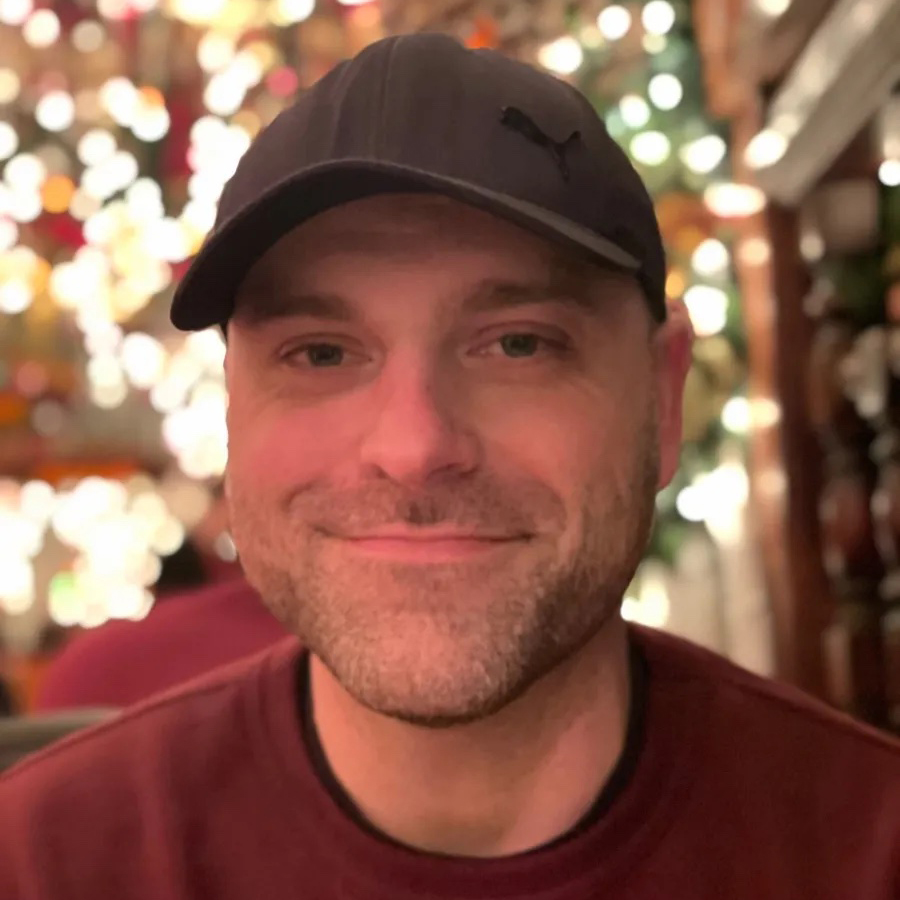“I liked Bad Company and Free. Those bands, like David Bowie and Roxy Music, were all pop. But their albums had deeper cuts. That’s what I hoped we could pull off”: Billy Duffy on the making of The Cult’s 1985 breakout album – and why Rain made him sweat
Led by the stunning She Sells Sanctuary, Love was the sound of a band experimenting at scale, finding the great enabler in producer Steve Brown, and it just so happens to be Duffy's favorite

On his way up the rock ’n’ roll ladder, Billy Duffy – co-founding guitarist of the Cult – wasn’t all that into heavy metal, leaning instead toward glam and proto-punk, genres centered on primal simplicity.
“I just wanted to be like the Stooges,” he says today. “Really, why can’t you play four chords over and over again? [Laughs] It’s hypnotic! I’ve always loved early Stooges records for [their] simplicity; they had a kind of hidden hypnotizing quality.”
Although they definitely brought more than four chords to the party, Duffy and the rest of the band – singer Ian Astbury, bassist Jamie Stewart and drummer Nigel Preston – succeeded in bringing a touch of hypnotism to their second album, Love, released in October 1985. Let’s just say its grooving bass lines, lush melodies and massive guitar hooks put record buyers in a major trance, turning Love into the band’s breakthrough release.
Love came on the heels of the band’s 1984 debut, Dreamtime, which, although reaching Number 21 on the U.K. charts, wasn’t the massive hit the band and the label – Beggars Banquet Records – had in mind. The vision for Love, which was produced by Steve Brown, who had helmed Wham!’s debut album and helped the Cult achieve success with She Sells Sanctuary back in May, was simple.
“I liked Bad Company and Free a lot,” Duffy says. “To me, those bands, like David Bowie and Roxy Music, were all pop. But their albums had deeper cuts; that’s what I hoped the Cult could pull off.”
Along with She Sells Sanctuary, which ended up on side two of Love, singles like Rain and Revolution provided the hits, while Nirvana and Phoenix served as the types of deep cuts Duffy yearned for.
All in all, Love was a winner; in the 40 years since it was released, it’s sold nearly three million copies and has earned its status as a mid-Eighties rock classic.
All the latest guitar news, interviews, lessons, reviews, deals and more, direct to your inbox!
“It’s my favorite of all of [our albums],” Duffy says. “I have no complaints. It’s a very special record. I don’t listen to it often, but occasionally, when I do, I’m like, ‘It kind of holds up, doesn’t it?’”
Going into Love, where was the Cult at, band-wise, after your 1984 debut, Dreamtime?
We were actually after Steve Lillywhite, as everybody was in those days, but he was probably too busy with Simple Minds and U2
“It was a massively important period for the band. Dreamtime was sort of cobbled together from singles and EPs, so it was a bit of a mishmash. It was a decent enough record, but from ’84 to ’85, it sort of felt like our peers in the U.K. were all having hits, so we felt pressure to come up with one.”
Is that why you released She Sells Sanctuary,” which ended up on Love, months ahead of the album?
“In some ways, it sounds a bit naïve now, but we did Sanctuary as a single before we went in to make the album as a trial to check out this producer called Steve Brown. We were actually after Steve Lillywhite, as everybody was in those days, but he was probably too busy with Simple Minds and U2. [Laughs]”
Steve Brown produced Wham’s first album, 1983’s Fantastic. Did you feel he was right for the Cult?
“He turned out to be a brilliant character and the perfect guy for what we needed at the time. He brought a lot of pop sensibilities, but our record company said, ‘Look, this is a gamble. Why don’t you go in, do one song with him and see how it goes?’ That turned out to be Sanctuary.”
Sanctuary was recorded at Olympic Studios in London. What was that like?
“It was an old rock studio that had been used by Led Zeppelin, Free and loads of [other] people. It wasn’t very modern; it was quite old fashioned. We wanted to go somewhere that had some kind of spirit and energy.
The studio where we did the rest of the album had a Mitsubishi digital desk. We even had a Japanese bloke whose job was to sleep there and make sure if the desk went down, he could fix it
“So, we went in, did the single there and got lucky that it was a hit. That changed everything. Basically, everybody around us – the management, the record company – said, ‘We’ll have more of that, please,’ which was understandable.”
You recorded the rest of Love at Jacobs Studios in Farnham, which I’m assuming was very different from Olympic, right?
“We went in to do Love in the middle of 1985 on the back of Sanctuary, which had a slow climb up the British charts – but it stuck around for a long time.
“But the studio where we did the rest of the album had a Mitsubishi digital desk. We even had a Japanese bloke whose job was to sleep there and make sure if the desk went down, he could fix it. [Laughs] Looking back on it, we wanted to go the organic route with Sanctuary and capture the spirit, and we ended up in a ridiculous state-of-the-art studio. But it all worked out.”
What guitars and amps did you bring into the studio?
“We didn’t have a lot in the way of equipment. I had a couple of Gretsch guitars – a [White] Falcon and a Country Club that I’d painted black, and I believe Ian had a Telecaster, which I borrowed but didn’t use often. And there was a Vox [V223 Mark XII] Teardrop 12-string that you can see in the Revolution music video.
“t was a red thing. A whole load of them from the Sixties appeared in London; they found them in a warehouse and put them together – they had bolt-on necks. And there might have been an acoustic knocking around, but I don’t remember owning one.”
Would that have been the acoustic guitar we hear on She Sells Sanctuary?
“I think there’s a sample of an acoustic on Sanctuary – that ‘ca-chin-chin’ kind of thing – which was done at the very end of the recording. That was Steve Brown being a producer. He said, ‘Put a little acoustic thing on it.’ As much as we enjoyed being organic, we weren’t afraid to play around with technology.”
Guitar amp-wise, what was the secret to your tone?
“There would have been a Marshall, and there would have been a Roland JC-120, so that would have been my go-to setup. But Ian also had this odd Yamaha that was a copy of a Fender Twin that I’ve never seen since. It had, like, red dials.
“But honestly, I remember not ever feeling comfortable with the tone until I blended all the amps together with various mics and distances. And Steve Brown was pretty mental; he’d basically go for anything. I think we might have taken everything we had and just blended them. It was basically like a wall of about four amps.”
Do you remember recording Rain?
“Sanctuary wasn’t a fluke, but it just happened. With Rain, it was much harder because I was tasked with coming up with a follow-up single, and I found Rain. I’m actually more proud of Rain than I am of Sanctuary because Sanctuary really was a gift, but Rain was a bit more perspiration. [Laughs] It had some guts to it; we were trying to heavy-up our sound.”
Love ended up being a big hit in the U.K., topping out at Number 4 while also gaining a decent foothold in the U.S. Given the success of She Sells Sanctuary. Did you expect that at all?
Steve Brown had this pop sensibility, but his foundation was rock, and he had a very cavalier attitude. He was very focused on pop and wanted to bring out the commerciality in the band
“Steve Brown had this pop sensibility, but his foundation was rock, and he had a very cavalier attitude. He was very focused on pop and wanted to bring out the commerciality in the band. He felt we had talent but hadn’t quite gotten our pop hooks together. He was instrumental in helping us work on that. It was just one of those things where the album was meant to happen, but we didn’t take it for granted.”
What does Love mean to you as a guitarist, and what did it mean for the trajectory of the Cult?
“It gave me confidence. We found our identity. That album meant a lot to us, and it gave us confidence that we were on the right path. There were a few moments of doubt after Dreamtime, and we might have had a few dark evenings of self-doubt, though having a big hit single like Sanctuary helps.
“ut it was very important to us not to just be a one-hit wonder and to come up with quality songs once we had the ear of the public. Suddenly, rather than being sub-cultural, we were open to the entire British music market. It was interesting!”
- Love is out now via Beggars Banquet.
- This article first appeared in Guitar World. Subscribe and save.
Andrew Daly is an iced-coffee-addicted, oddball Telecaster-playing, alfredo pasta-loving journalist from Long Island, NY, who, in addition to being a contributing writer for Guitar World, scribes for Bass Player, Guitar Player, Guitarist, and MusicRadar. Andrew has interviewed favorites like Ace Frehley, Johnny Marr, Vito Bratta, Bruce Kulick, Joe Perry, Brad Whitford, Tom Morello, Rich Robinson, and Paul Stanley, while his all-time favorite (rhythm player), Keith Richards, continues to elude him.
You must confirm your public display name before commenting
Please logout and then login again, you will then be prompted to enter your display name.





